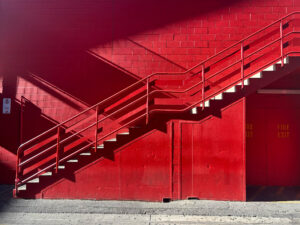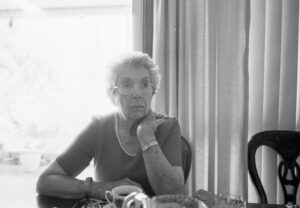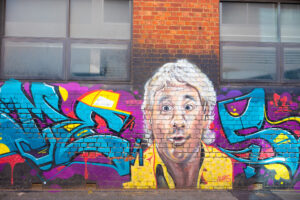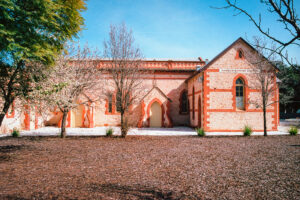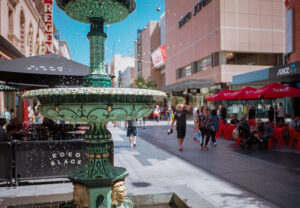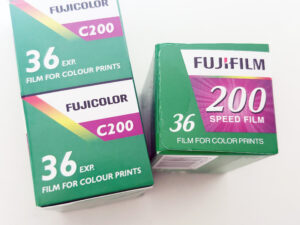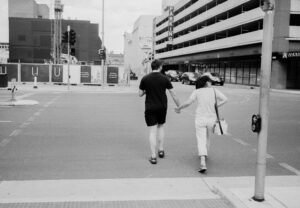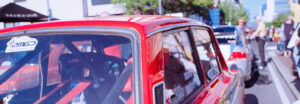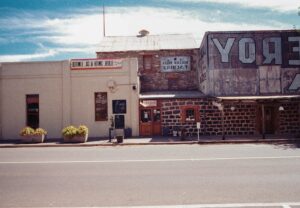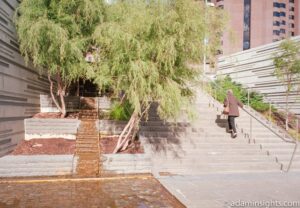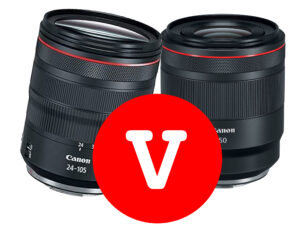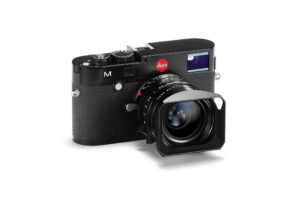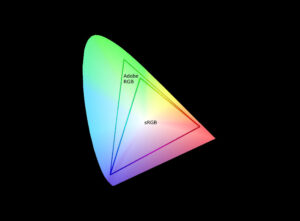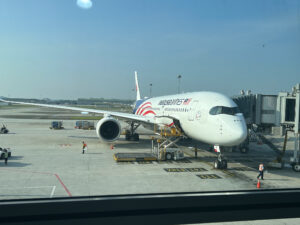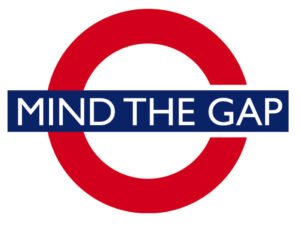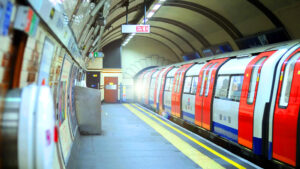Queen Elizabeth II, the longest-reigning monarch in British history, will forever be remembered for her remarkable lifetime of service. Her enduring legacy as a symbol of strength and stability across decades is indisputable. However, beyond her regal duties and public persona, there existed a more personal side of Her Majesty that fewer are aware of: Queen Elizabeth II, the photographer. The Queen was arguably the most photographed woman of all time, but as it seems an avid photographer with Leica and Rollei gear.
Throughout her life, the Queen harboured a deep love for photography, a passion that was first ignited when her father, King George VI, gifted her a Box Brownie camera before the onset of World War II. This simple, yet iconic camera introduced the young Princess Elizabeth to the art of capturing moments—a hobby that would stay with her throughout her reign.
This article explores Her Majesty’s journey with photography, her cherished cameras, and the legacy she leaves behind as both a subject and a creator of timeless images.
What Cameras did the Queen use?
A Royal Introduction to Photography: The Box Brownie
The story of Queen Elizabeth II’s passion for photography begins with the Box Brownie, a camera that holds a special place in the history of photography. Introduced by Kodak in 1900, the Box Brownie was revolutionary for its time, making photography accessible to the masses. Its simplicity and affordability allowed people of all walks of life, including royalty, to document their personal experiences.
When King George VI presented the young Princess Elizabeth with her first Box Brownie, he unknowingly set her on a path that would see her capturing family moments, state visits, and private retreats for decades to come. The camera, though rudimentary by today’s standards, became a gateway for the future Queen to explore the world through a lens, developing a keen eye for composition and detail.
For those interested in photography and seeking a piece of nostalgia, a Box Brownie remains a treasured collectible. These cameras, which once cost just a few shillings, can still be found on marketplace websites like eBay or at car boot sales for a modest price. They serve as a reminder of a simpler time when the magic of photography was just beginning to be realized by the public and royalty alike.
The Queen’s Leica M3: A True Icon Behind the Lens
As the years passed and technology advanced, so did the Queen’s choice of cameras. Among the various models she used throughout her life, one stood out as her apparent favourite—the Leica M3. Launched in 1954, the Leica M3 was, and still is, an icon in the world of photography. It was a camera that redefined what was possible with 35mm film, introducing new features like an improved film advance lever and a combined viewfinder and rangefinder system.

The Leica M3 wasn’t just a tool for the Queen; it was an extension of her passion for photography. She was often seen with the camera at public events, particularly at horse trials and races, where she would capture the moments that mattered most to her. One memorable sighting was at the 1960 Badminton Horse Trials, where the Queen, camera in hand, was seen capturing the action with the precision and enthusiasm of a seasoned photographer.
Unlike many of today’s celebrities who carry a Leica for its aesthetic appeal, Queen Elizabeth II used hers with purpose and skill, decades before the camera became a status symbol. The image of Her Majesty, camera slung around her neck, poring over the details of a shot, stands as a testament to her genuine love for photography.
The Transition to the Leica M6: Embracing Modernity
In later years, the Queen transitioned from her beloved Leica M3 to a more modern version—the Leica M6. Launched in 1984, the M6 came with several upgrades that made it a more versatile camera. It featured a built-in light meter, which simplified the process of taking well-exposed photographs, something that likely appealed to the Queen as she continued to document her life and travels.

What Lens did the Queen use on Her Leica M6?
Looking closely at the photos I think the Queen used a Leica 50mm F2.0 Summicron.
The Leica M6 retained the same basic design principles as its predecessor, the M3, but with enhancements that reflected the changing times. The Queen’s choice to switch to the M6 suggests a desire to keep up with advancements in technology while staying true to her love for analog photography. The M6, with its manual film advancing, rewinding, and film speed settings, required a deep understanding of photography—something the Queen clearly possessed.


One can easily imagine Her Majesty at Buckingham Palace, her beloved corgis by her side, flipping through photography magazines, contemplating the latest camera models, and deciding that the M6 was the perfect fit for her evolving needs. The thought of the Queen, known for her poise and elegance, indulging in such a relatable hobby brings a sense of warmth and humanity to her otherwise regal image.
The Queen’s Rollei 35: Small, Portable, and Luxuriously Gold
Another camera that found a place in the Queen’s collection was the Rollei 35, a compact and portable model that became one of the world’s smallest 35mm film cameras upon its release in 1966. The Queen’s version of this camera was particularly special—a limited edition model dipped in 24-carat gold with a lizard leather body, embodying both luxury and practicality.


The Rollei 35 was not just a showpiece; it was a tool, a camera that the Queen used on various royal visits and tours. In 1979, during a state visit to Oman, she was photographed with the miniature camera, capturing the beauty of her surroundings. The sight of the Queen, dressed in her signature floral attire and gloves, holding up the Rollei 35 to take a photograph, is a testament to her enduring passion for photography, regardless of the setting.
The Rollei 35’s compact size and ease of use made it a perfect travel companion for the Queen, allowing her to document her experiences with the same dedication and attention to detail that she brought to all her endeavors. Today, a Rollei 35 in good condition, especially one as unique as the Queen’s gold edition, can fetch a significant price, making it a coveted item for collectors and photography enthusiasts alike.
If you want to experience this 35mm camera the Queen did, you can right here https://rollei35af.com/.
The Rolleiflex TLR: A Testament to the Queen’s Excellent Taste
In addition to the more portable models, Queen Elizabeth II also owned and used a Rolleiflex Twin Lens Reflex (TLR) camera, a model renowned for its exceptional build quality and image clarity. The Rolleiflex TLR, with its waist-level viewfinder, offered a different shooting experience—one that required the photographer to engage more deeply with the subject, creating a sense of separation and focus.

The Queen was spotted with her Rolleiflex TLR around 1965, further solidifying her reputation as a discerning photographer with an eye for quality. The camera’s unique design and operation made it a favorite among professional photographers, and the Queen’s use of the Rolleiflex speaks volumes about her understanding and appreciation of fine photographic equipment.
Owning and using a Rolleiflex TLR is not just a statement of taste; it’s a reflection of the photographer’s commitment to the craft. The Queen’s choice to include this camera in her collection shows her dedication to capturing moments with the highest level of precision and artistry.
Capturing Home Movies: The Kodak 16mm Cine Camera
Photography wasn’t the only medium through which Queen Elizabeth II documented her life. She also had a penchant for shooting home movies, often using a Kodak 16mm Cine camera. This camera, known for its reliability and ease of use, allowed the Queen to film her family’s private moments, providing a glimpse into the more personal side of the royal family.
One particularly notable use of the Kodak 16mm Cine camera was during the royal family’s time aboard the SS Gothic, en route to Fiji as part of the coronation world tour in 1953. The Queen captured the arrival of the escort ship HMNZS Black Prince, creating a lasting record of this significant journey.
Fans of the Netflix series The Crown might recall scenes depicting a young Queen Elizabeth II receiving this camera as a gift from her father, King George VI—a moment that underscores the deep connection between the Queen and her passion for capturing memories on film.
The Legacy of The Queen’s Cameras
Queen Elizabeth II was one of the most photographed women in history, but her role behind the camera is a lesser-known yet equally important aspect of her legacy. Her collection of cameras, each chosen with care and used with skill, reflects a life lived with an appreciation for the art of photography. From the iconic Leica M3 to the luxurious Rollei 35, each camera tells a story of a monarch who was not only the subject of countless photographs but also a creator of images that captured the world around her.

For those who share the Queen’s passion for photography, these cameras offer more than just a connection to the past—they represent the timeless pursuit of capturing moments that matter. Whether through a Box Brownie or a Leica M6, the Queen’s journey as a photographer is a reminder that the art of photography is both a personal and universal endeavour, one that transcends time, status, and technology.
Not many of the photos the queen took are publicly available. To her, they are likely something she was able to enjoy in private and use to detach herself from public life.
As we remember Queen Elizabeth II, let us also celebrate her love for photography, a passion that, like her reign, has left an indelible mark on the world. Her Majesty may have been a queen by birth, but behind the lens, she was every bit the dedicated photographer, capturing the essence of life in all its forms.

